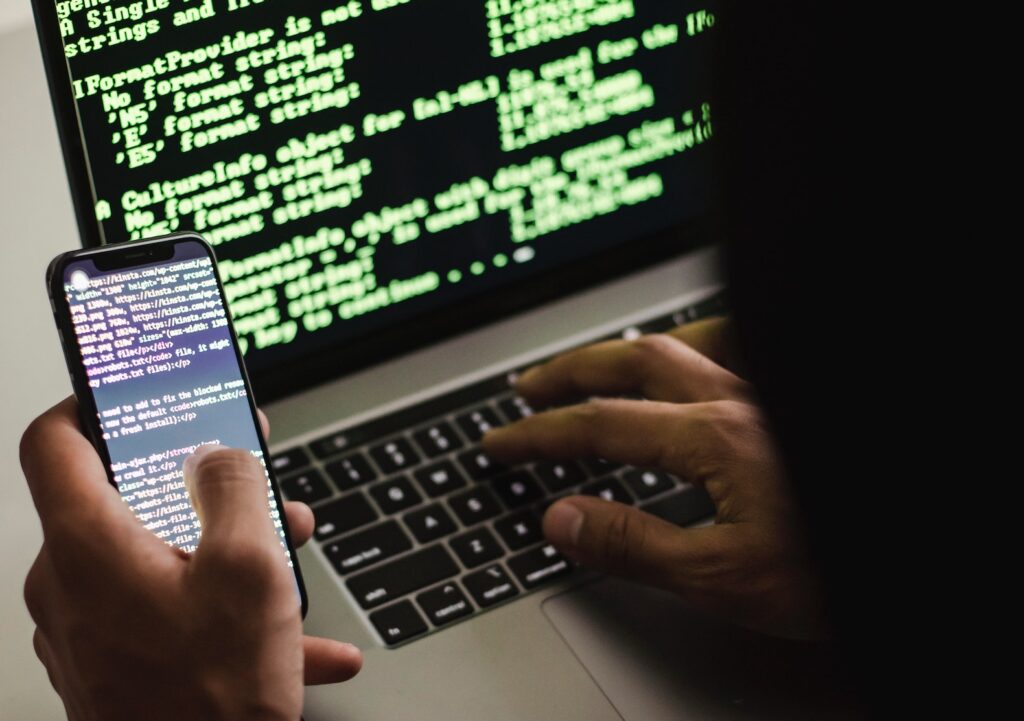The consumption of mobile devices has tremendously increased over the last few years. More people rely on mobile apps for a vast part of their digital tasks compared to desktop apps. Most businesses want to develop a mobile application to reach more users around the world. Making the demand for mobile application development randomly increase.
Developers pay ultra attention to software design to provide a smooth and convenient experience. People normally install mobile apps and provide personal information without critically thinking about the security implications. Mobile applications contain large amounts of sensible user data which makes them vulnerable. And it’s for that they require protection from unauthorised access. Mobile app developers must focus on cybersecurity the same way they do on functionality and flexibility, if not more. Mobile app cybersecurity is inevitable and must be taken more seriously as it possesses real threats to a business such as loss of sensitive data, ransomware losses and more.

What’s Mobile Application Security?
Mobile application security is the securing of high-value mobile apps and your digital identity from external fraudulent attacks. This includes tampering, reverse engineering, malware, keyloggers, and other forms of manipulation or interference. An all-inclusive mobile app security strategy includes technological solutions, such as mobile app shielding, as well as best practices for use and corporate processes.
Mobile app security has quickly grown in importance as mobile devices have proliferated across many countries and regions. The trend towards increased use of mobile devices for banking services, shopping, and other activities correlates with a rise in mobile devices, apps, and users. Banks are stepping up their security, and that is good news using their mobile device for banking services.
How Do Hackers Attack Mobile Applications?
As mobile applications are becoming popular, many organisations are picking up the development of these applications. These mobile applications create several opportunities for organisations—like a more personalised user interface and experience, wider reach to customers and more. Much as these applications come in handy for organisations, they also create opportunities for hackers.
Here are some of the ways hackers use to breach mobile applications.
App Tampering
Tampering is the process of changing a mobile app either the compiled app or the running process or its environment to affect its behaviour. Hackers use this approach to make unauthorised modifications to applications to achieve their desired objective. The two main reasons why hackers utilise this approach are to extort a company’s technology to attain monetary or non-monetary gains by illegally using the app’s services. The second reason is to steal customer information from the app services. The information which hackers use for monetary purposes or to run the company’s brand.
Spoofing
Spoofing is the act of disguising communication from an unknown source as being from an authentic and trusted source. This kind of hack applies to emails, websites, and mobile applications and can be even more technical. Spoofing works on several communication methods and employs various levels of technical know-how. Spoofing is used to execute phishing attacks which are fraudulent use of electronic communication to gain sensitive and confidential information like usernames, passwords, credit card information, network credentials and more. Hackers do this by posing as legalised individuals or institutions via phone or email. Attackers use social engineering to influence victims into executing particular actions—such as clicking on a malicious link or attachment—or willfully divulging confidential information.
Source Code Leakage
Your source code is your most valuable digital asset. Source codes shape the building blocks of your mobile application and are the IP (Intellectual Property) of your company. A source code leakage is dangerous as several kinds of access keys are stored in the source code. These keys are shared by developers and hackers can always reuse those keys as many times as they wish. Source code leaks come from several sources. Hackers usually scan third-party sources to find code. Misconfigured DevOps applications or software like IDE plugins, CSV, and FTP can be used to unlock code. Code access can come from bad security practices like storing login credentials in code in plain text. Whether exposed or stolen, leaked source code may not only give your competitors an edge in developing new products but also allow hackers to exploit its vulnerabilities
Memory Hacking
Memory hacking is simply a way of tampering with data in the memory. Earlier on, hackers extracted the password of the account from the outside, but memory hacking is infiltrating mobile memory and manipulating the account and the amount of money after installing a different backdoor program. The damage can be made not only from leakage of financial information from financial apps, but from game apps such as leakage of personal information, in-app purchases of game items without permission, and speed hacking to cheat games.
HOW TO SECURE MOBILE APPS

Utilise authorised APIs
Always use authorised API in your app code. It’s recommended to have central authorization for the whole API to attain ultra-security in a mobile app development system. API calls are normally protected by a simple API key and user credentials often as an access token. Mobile apps are often less secure and since installed on a device, hackers can also install an app on a device they control in order to manipulate the app and find weaknesses. For that, every API must require app-level authentication.
Source Code protection
As a developer, you must provide a high level of security so that hackers cannot access your app’s source code or decipher it. There are well-known technologies you can utilise to protect your source code. These technologies include obfuscation and encryption. Obfuscation refers to a series of programming techniques designed to disguise elements of a program’s code. It’s the primary way that programmers can defend their work against unauthorised access or alteration by hackers or intellectual property thieves. This tech alters the whole source code and makes it hard or impossible to read.
Anti-Tampering
Tampering means to add, delete, or modify particular source code on existing normal apps therefore the tampered app will share the original source code partially. Based on this similarity, it is able to find apps with similar source code but a different writer. Also, it is possible to check an app’s tampering status by integrity checking when the app starts to run.
Open-Source Code Assessment
Most mobile applications use open-source code or third-party libraries which contain reusable source codes. Even though such codes make it easy to develop and deploy mobile applications, they are readily available to anyone, which poses a threat to the Android apps that are using them. The method of reverse engineering can be used to crack the code easily. Moreover, in the app development process, the open-source codes from the third-party libraries are merged with the written code, and they go unnoticed during app testing. So, it is mandatory to run a thorough test on the open codes for any vulnerabilities before adding them to the app code.
Authentication and Authorization Techniques
The authentication and authorization process forms the two strong pillars of mobile app security. Both are equally important to secure the application from cyber-attack. The authentication process ensures that the users provide required information such as login credentials to open and access the data in the app. It is essential to have multi-factor authentication to prevent data theft. It includes user id, password, PIN, OTP, etc. It is also essential to give limited authorization according to the requirements. Giving high-level authorization such as administrator to the normal user could result in data theft and tampering with the entire app. The authorization should always take place on the server side to verify the role and permissions of the authenticated users.
Conclusion

To secure the mobile application from cyber-attacks, it is essential to follow security measures. As mentioned in the document, the mobile app developed with a proper security framework can help avoid future threats from cybercriminals, thus gaining the users’ confidence. When it comes to business, it is all about the trust and confidence of the users, which can be gained by deploying a high-featured app with a solid security framework.


